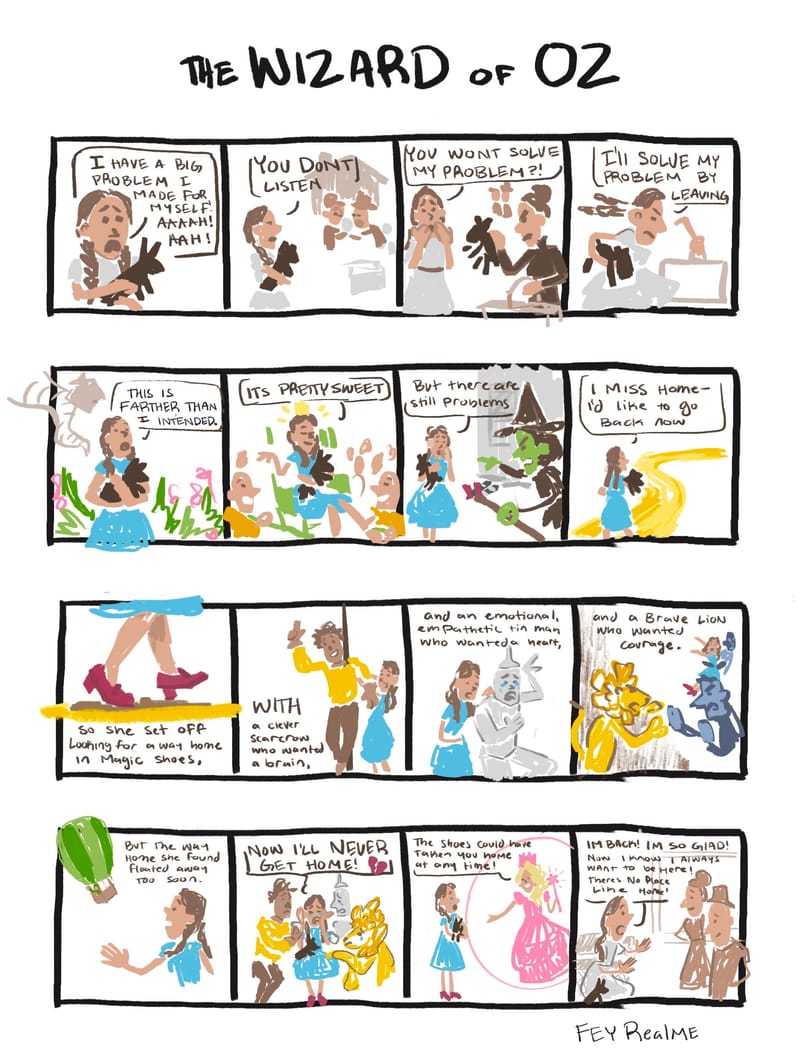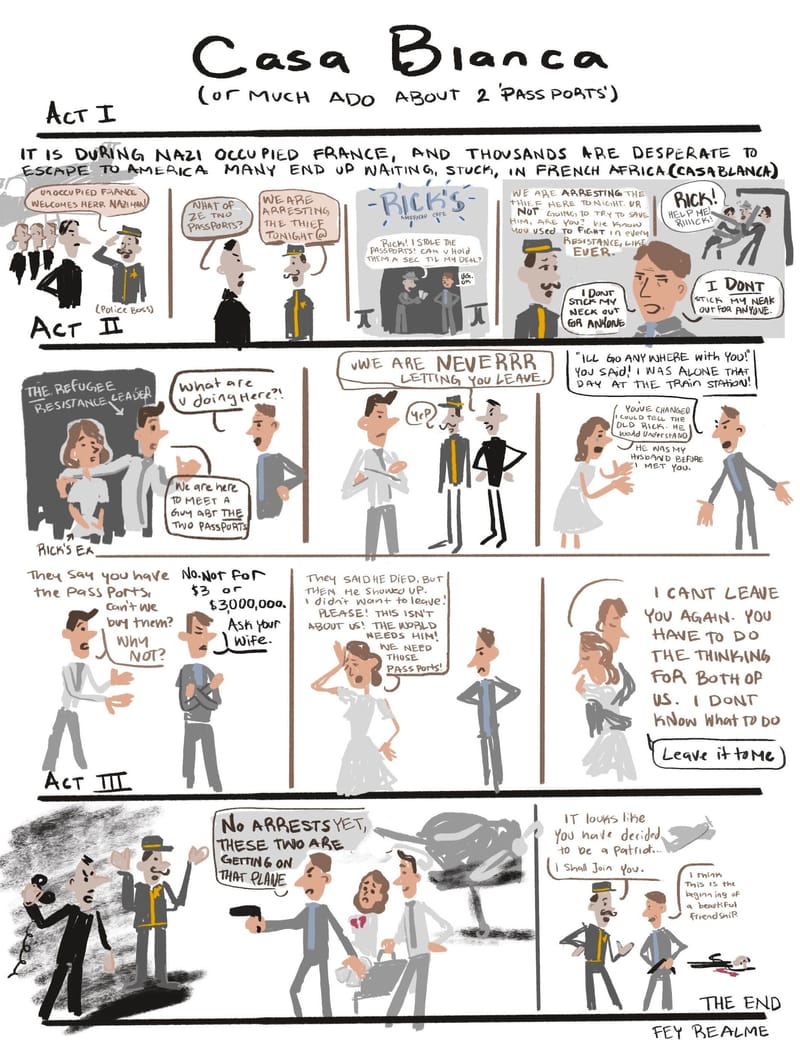Let’s prepare our stories for Graphic Novel Pro together!
-
@Fey-Realme thank you for the comment and I will be looking forward to hear more about everyone’s projects.
I feel like one of the big obstacles that we face as creative people trying to enter into something new, is finding what workflow works for us, specially when there are so many methods out there.
I love creating characters, really going deep into their backstory, psychology, goals, fears, etc etc, and I love thinking about story structure and I have a lot of fun with the outline, but yes, then when I start the script, I just loose steam, I go on tangents, trying to hold on the images I see in my mind , or trying to write them down with my limited writing skills, and at some point my mind goes blank.
That’s why I’m very excited to go back to my GN project and try a different approach.
Positive self talk and doing a bit at a time is definately the right mind set for something as big as a GN -
Hey guys, did you get to learn anything about armature this week? How do you think you can improve your stories by having a central message you are proving, or a question you are exploring?
I learned something new about armature this week. I was telling my husband about the story homework (armature) and he said "That is interesting how you used the word armature, what does it mean?" so I told him about how way back in the day Brian was watching modelers making a scaled-down model of a monster they were going to build for a movie he was working on (before CG), and he asked them "Why do you always build a wireframe for the clay model?" They told him that if they didn't have that wire frame, that armature, the clay would eventually collapse under its own weight. He later began using the word armature instead of theme to describe the backbone of the story because he felt it was appropriate, and it helped his students ask more questions and not assume they already knew what was going on.
Then my husband told me that the wire casing in an electric motor is called an armature, and that is the piece that makes the motor spin and generates electricity. Without the armature, you don't have electric motors--(electric motors are what make electric cars drive, and are used in a billion other functions and tech). We pondered how that aligns with the idea of an armature in a story. Like in an electric motor, when used, the armature of your story is what makes your story move, directs your decisions like a compass, and generates the power your story has to impact an audience (for better or worse--choose better).
If you find out what the story is about then you have found your compass and you can know what decisions you should make--down to the text treatment--because you know what journey you are taking the audience on.
Now the movie homework! Did anyone watch the wizard of oz? what would you say the armature is?
Its okay if you didn't, here is a summary of the movie.

the summary is also helpful for week 2 homework
WEEK 2 HOMEWORK
ep: Why Three Act Structure Matters (iTunes) (SoundCloud)
Movie: pick between Casablanca, Jaws, Die Hard 1, Wizard of Oz, Tootsie, or any other movie they mention--or just go listen to people talk and tell stories for a whileLike Brian says, all these things are just observations about how people tell stories naturally because that is how it works/is successful--it's just weird how we forget all the storytelling experience we have from talking with people when we go to write something, like we think it is different when it really is not.
-
@Fey-Realme I listened to the episode however I must admit I didn’t give it my undivided attention, but for what I understood the armature is the theme, the spine, or the true reason why you want to tell a story, the message that you want to teach.
I really liked the analogy of armature with clay, because everything in the story is to build or add body to the main thread which is the theme.
Sometimes is easy to go on tangents, and start exploring other thematic questions that maybe don’t necessarily build on the main thread, I see it as a tree with branches, you can spend all your energy adding branches but the trunk will lack substance and will feel weak, so for me it is a good thing to write down the theme right away, to not get lost as I add characters and plot.
The plot events and the characters must be in service of the armature or theme to build a robust sculpture, otherwise you end up with a lot of “parts” that don’t really make a whole.
I don’t remember if it was mentioned in the podcast but it’s good point you say the “central message you are proving”, challenges, questions, dilemas are all tested against the theme, and that’s something also to keep at the forefront of your mind, to avoid having conflicts that are not consequential or feel unimportant.I didn’t watch the movie, but I liked learning from the podcast that all the characters that Dorothy meets in Oz are representations of the characters she already knew back at home.
Your illustrated summary is so cool!
-
@Mariana-B I love podcasts because you don't have to pay 100% undivided attention to get the point of whatever they're saying! I like how it is listening to a conversation, not like listening to an audiobook where you have to pay attention to all the details and decyper stuff.
That is a great way to think about it! I believe that stories are living things like trees, and so it is a good metaphor. To take it a step further, if a tree had too many branches and not enough roots and trunk it would not be able to support the weight of the branches, but also it would not be able to sustain the branches with the nutrients they need to stay healthy, and the tree would get sick and die--even if it didn't fall over. I'm glad you got to listen to the episode, and thank you for sharing your insight!
-
Hello again my friends, did any of you get to listen to the episode “why three act structure matters” or watch an old movie looking for the transitions? What stood out to you? What did you see?
Let's talk about it, why IS three act structure important?
Well for starters, three is just a magic number–all the best, most stable, most powerful things come in threes --why would it be different in story?Act one: “Once upon a time,” The Proposal
In the first act we should learn everything we need to know about what is usual about the characters, circumstance, and setting. This is like the “duck duck” part of the duck duck goose game. Brian says that if you have a problem with the ending, it is really a problem with the beginning, and I think that makes sense. If you have your armature figured out, and you know what has to happen, then you should be able to reverse engineer what you need to tell your audience in the very beginning so they will be able to understand the story. You don't have to come out and directly say the armature, but you can have a character say something like it to bring further subconscious awareness to the nature of the story. Only put in what you need.Act Two: “until one day… and because of that,” The Argument
The second act begins when the character is faced with an opportunity or a conflict (inciting incident), and continues as they scramble all over trying to deal with it and achieve their personal goals. This is where in the game you would say “goose!” and then the people scramble over each other, the goose trying to run around the circle and sit down before the person who is it can tag them or sit down in their place (i think that's how it goes right?) This is the longest part of the story, and the most notable (because this is where everything happens), but do not disregard the importance of the first act because it is plain and may seem comparatively boring–this context and the contrast in act two with regular life set up in act one is what makes the stuff in act two compelling. DO NOT CUT ACT ONE. Two more important things to know about act two: First, what happens in act two must develop the story by pressuring the protagonist to explore himself or herself and the problem. If your character does not finish the story having grown or developed in some way, it will not be compelling, no matter how many explosions and cool fighting sequences there are. Second, in the middle of act two, there is a fulcrum where the nature of the conflict changes and usually matures. This is where the most interesting stuff happens: in ghostbusters, this is when the big bad ghost shows up, you know, the one that makes the enormous Pillsbury dough boy? It would be boring if the movie was resolved after they got famous and their business was successful–we would feel like they left something out because in life the conflict shifts before we find the real resolution.Act three: ‘And ever since that day,” The Conclusion
The resolution isn't long, but it is where everything has fallen as it will, and there are no balls in the air. This is the moment where the character is shown basically as the butterfly moments after crawling out of its cocoon. In the game, this is where the runner is either caught and they become it, or they regain their seat. Then the round ends and a new one begins. It doesn't take long, but it is vital because this is where your armature is shown to have been provenThis week I watched Casablanca, which is highly praised and is noted for its great three-act structure. here is my summary


-
Week 3 homework:
Listen to Ep Clone Characters (iTunes) (SoundCloud)
Watch one of the movies they mention: Finding Nemo, Shashank Redemption, etc
Read a graphic NovelWho is your favorite clone character?
-
When does registration start? Did I miss it?!! I can’t find anything about it.
-
@Fey-Realme I didn’t watch the movie but I listened to the episode. The analogy of a trial like argument was great because it emphasizes the importance of each act. I always have trouble with my second act.
-
@ksfabian it hasn’t started yet. As far as I know it hasn’t been officially promoted either. I think Jake made mention of it on some of the podcasts, but I haven’t heard any more detail than that.
-
@Mariana-B thank goodness. That was one I was debating on doing or self publishing pro.
-
Referenced by
 Fey Realme
Fey Realme